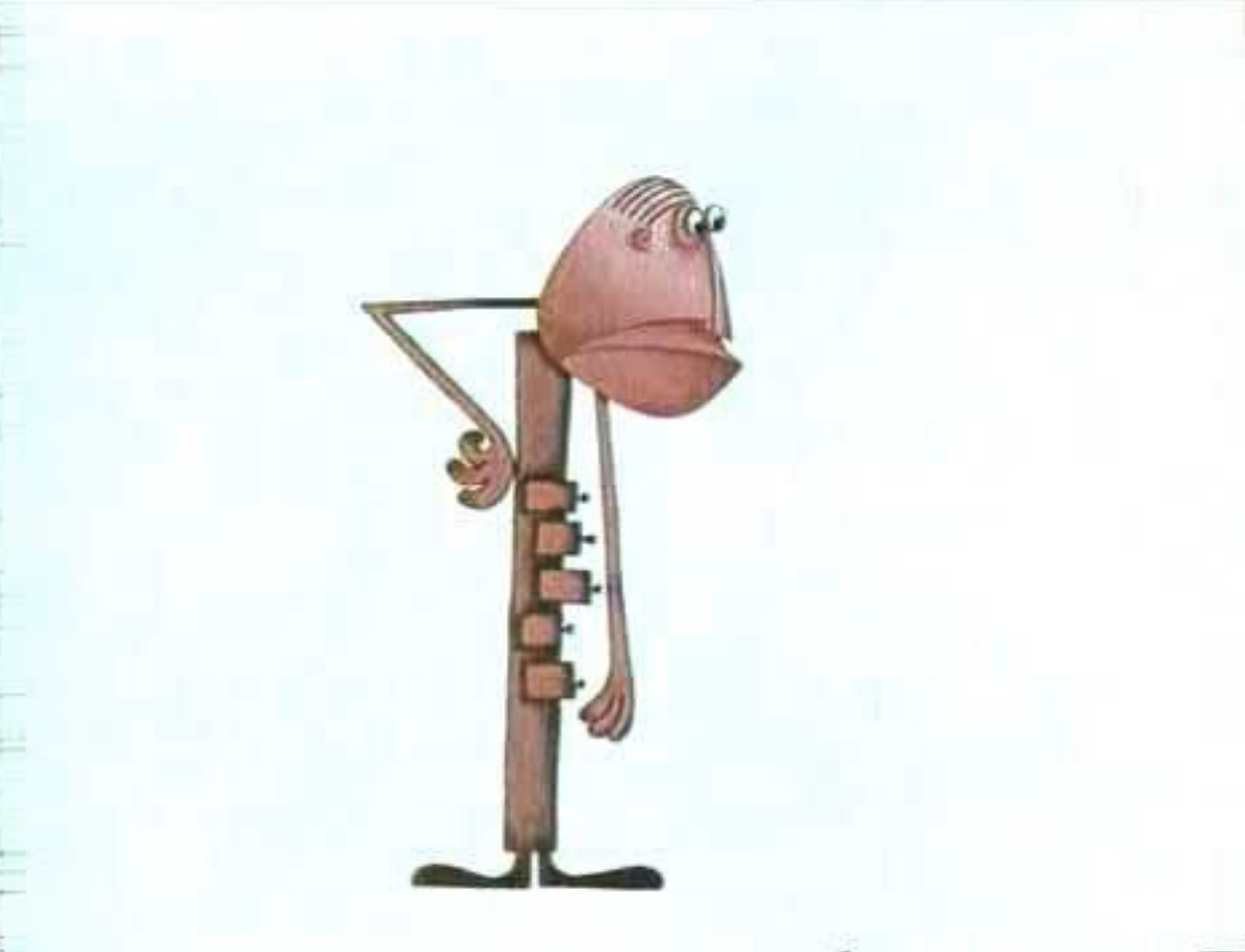RTRU Season 1 January 2023
Under The Hood
-
ENLV
On Acht Stunden sind kein Tag
Par Acht Stunden sind kein Tag
The essay explore depictions of working-class culture and rank-and-file labor organizing via a close examination of Rainer Werner Fassbinder’s Acht Stunden sind kein Tag (Eight Hours Don’t Make a Day), a five-episode miniseries the director produced for German television. Aired in 1972–73, Acht Stunden sind kein Tag follows a network of working-class friends, family, and colleagues at a tool-making factory in Cologne. Formally combining aspects of the bourgeois TV dramedy and more politicized worker films, the series depicts characters who organically come to develop workplace organizing tactics and, ultimately, their own critique of capitalism. In the essay, I contextualize the miniseries within Fassbinder’s oeuvre while also drawing on my own experience with art worker organizing in order to think through cultural representations of left politics and the working class of the 1970s and today.
Esejā tiek pētīts tas, kā atveidota strādnieku šķiras kultūra un organizēšanās, iztirzājot Rainera Vernera Fasbindera Acht Stunden sind kein Tag (“Astoņas stundas nav diena”) – piecu sēriju seriālu, kuru režisors izveidoja rādīšanai Vācijas televīzijā. 1972. gadā pārraidītais seriāls vēsta par strādnieku šķiras kopienu, draugiem, ģimenēm un kolēģiem, kas strādā kādā instrumentu ražotnē Ķelnē. Seriālā apvienoti buržuāzisku televīzijas dramatisko komēdiju un lielākā mērā politizētu strādnieku filmu formālie elementi, parādot varoņus, kas organiski izstrādā darbavietas organizēšanās taktikas un galu galā arī paši savu kapitālisma kritiku. Ar mērķi pārdomāt kreiso politikas un strādnieku šķiras kultūras reprezentācijas 1970. gados un mūsdienās, šajā esejā es analizēju seriālu plašākā Fasbindera darbu kontekstā, izmantojot arī savu pieredzi mākslas darbinieku organizēšanā.
Still from Rainer Werner Fassbinder’s Eight Hours Don’t Make a Day (1972–73)
Stopkadrs no Rainera Vernera Fasbindera filmas Eight Hours Don’t Make a Day (1972–1973)
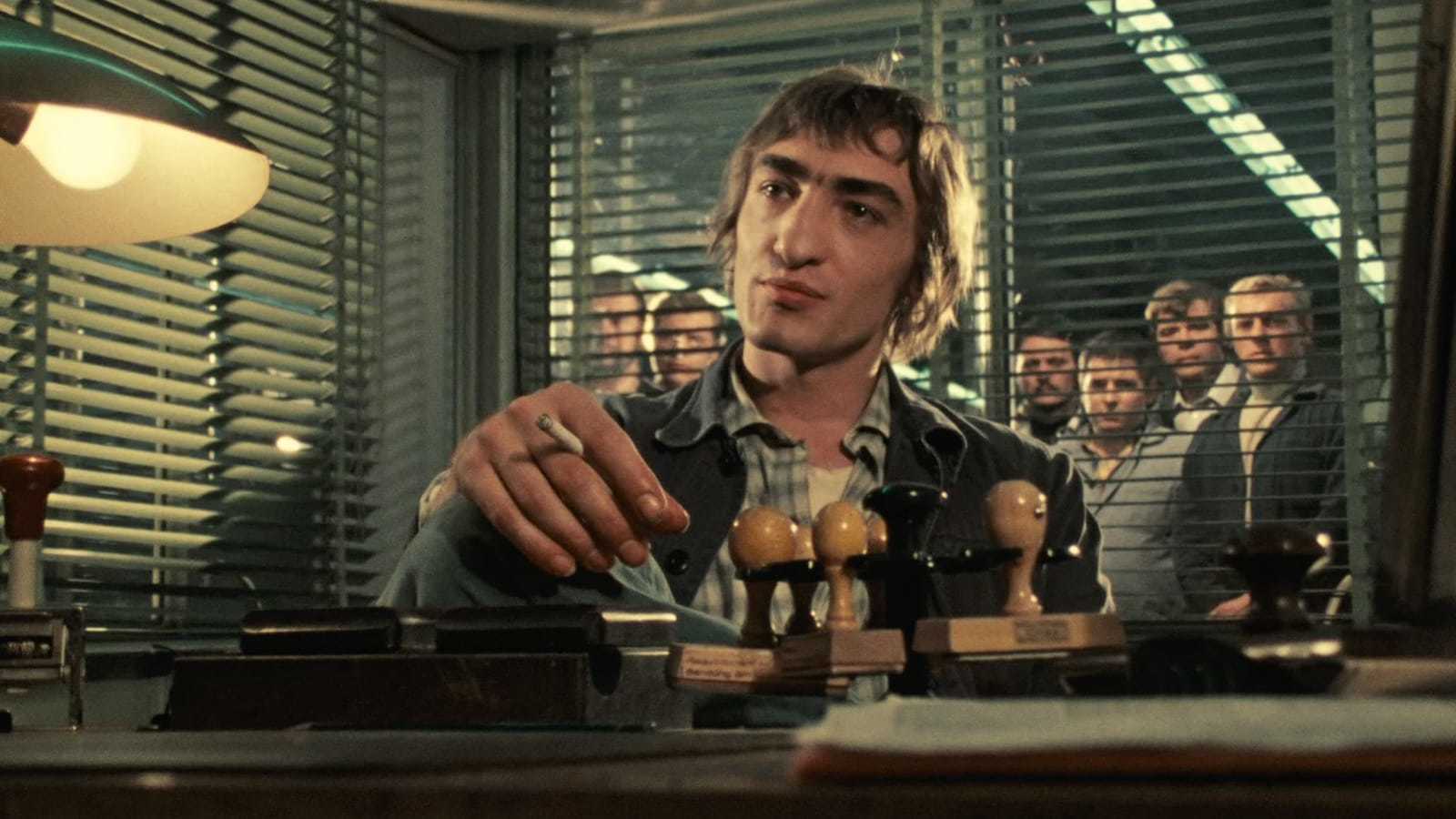
Dana Kopel is a writer, editor, and organizer based in Los Angeles. Formerly the senior editor and publications coordinator at the New Museum, she helped organize the New Museum Union-UAW Local 2110 and now works as a union organizer with OPEIU Local 153. Her writing appears in publications such as The Nation, The Baffler, Frieze, Art in America, and SSENSE.
Dana Kopela ir Losandželosā dzīvojoša rakstniece, redaktore un arodbiedrību organizatore. Strādājot par vecāko redaktori un izdevumu koordinatori New Museum, viņa piedalījās arodbiedrības Museum Union-UAW Local 2110 organizēšanā. Pašlaik strādā par arodbiedrības organizatori OPEIU Local 153. Viņas teksti publicēti tādos izdevumos kā The Nation, The Baffler, Frieze, Art in America un SSENSE.
-
ENLV
Cabinet of Curiosities
Cabinet of Curiosities
By creating animation showcasing a number of non-existent pathologies that reference early medical imaging techniques and the underpinning processes of 3D rendering, the latter of which are conceptually based in photography, the author explores distance and factuality in the field of medical imagery, both figuratively and literally, and the inherent objectification that follows. Through the involuntary mediation by the screen, images are flattened, removed from context and often perceived purely aesthetically. The resulting footage is a fictional set of tumors, abscesses and cellular mutations that embrace the nature of the medium and exist purely for the sake of being displayed.
Izveidojot animāciju, kurā parādītas vairākas neeksistējošas patoloģijas, kas atsaucas uz agrīnām medicīnisko attēlu radīšanas metodēm, un 3D renderēšanas pamatā esošie procesi, kas ir konceptuāli balstīti fotogrāfijā, autors gan burtiskā, gan tēlainā veidā pēta medicīnisko attēlu faktualitāti un tiem rakturīgo objektivizāciju. Ar ekrāna piespiedu starpniecību attēli tiek saplacināti, izņemti no konteksta un bieži uztverti tikai estētiski. Rezultātā iegūtais materiāls ir izdomāts audzēju, abscesu un šūnu mutāciju kopums, kas izmanto medija dabu un pastāv tikai tāpēc, lai tiktu parādīts.
ELTONS KŪNS has studied English and Literature at LCC International University and New Media Art at Liepāja University. Kūns’ body of work focuses on the ambiguity of the real/virtual space via the medium of perceptually sculptural objects operating on the threshold of screen space perception. Kūns has participated in such group shows as Well Now WTF? (Silicon Valet, online, 2020), SOOZ V1.9 (Sooz, online, 2015), FR€€ ₮HI₦G$ (STCFTHOTS, Leeds, England, 2015), GIFbites (Dar-ol-Hokoomeh, Shiraz, Iran, 2014).
ELTONS KŪNS dzimis Aizputē. Studējis angļu valodu un literatūru LCC Starptautiskajā universitātē Klaipēdā un jauno mediju mākslu Liepājas Universitātē. Kūns skatītājiem demonstrē reālās un virtuālās telpas neviennozīmību, veidojot digitālus skulpturālus objektus uz ekrāntelpas ārējās robežas. Piedalījies izstādēs Well Now WTF? (galerijā Silicon Valet, tiešsaistē, 2020), SOOZ V1.9 (galerijā Sooz, tiešsaistē, 2015), FR€€ ₮HI₦G$ (galerijā STCFTHOTS, Līdsā, Anglijā, 2015), GIFbites (galerijā Dar-ol-Hokoomeh Širāzā, Irānā, 2014) u.c.
-
ENLV
Wavetable Objects
Wavetable Objects
Rio Roye debuts a real-time rendering technique which decomposes SVG drawings into pitched tones and swarming sonic textures in order to explore how motion is apprehended differently in sound and image. The final work consists of four animations, each with two-channel sound, as well as accompanying SVG drawings, and a short description detailing the work’s construction.
The real-time rendering at the project’s heart is a two-part algorithm which first parses the points of an SVG drawing into tables of X and Y values, and then—evaluated by an oscillator that shifts between subsonic and ultrasonic frequencies—generates the sound of a drawing. As part of this rendering, values from the X and Y tables become the left and right-channel of the sound, respectively.
Rio Roje piedāvā reāllaika renderēšanas tehnikas pirmdemonstrējumu. Izmantojot šo tehniku, SVG attēli tiek sadalīti muzikālos toņos un skaņu tekstūru zumoņā ar mērķi pētīt atšķirības tajā, kā kustība tiek uztverta skaņā un attēlos. Noslēdzošais darbs sastāv no četrām animācijām, no kurām katrai ir divu kanālu skaņa, kā arī no pavadošajiem SVG attēliem un īsa apraksta, kurā detalizēts darba izveides process.
Reāllaika renderēšana, kas ir projekta galvenā daļa, notiek ar divdaļīgu algoritmu, kas sākumā parsē SVG attēla punktus X un Y vērtību tabulās un tad, izmantojot oscilatoru, kas svārstās starp zemskaņas un ultraskaņas frekvencēm, ģenerē attēla skaņu. Šīs renderēšanas procesā X un Y vērtības tiek pārvērstas attiecīgi kreisajā un labajā skaņas kanālā.
Untitled Still (Filter Transition), 2021, Digital Animation, 2000 x 2400px
Bez nosaukuma (filtra pāreja), 2021, digitālā animācija, 2000 x 2400 pikseļi
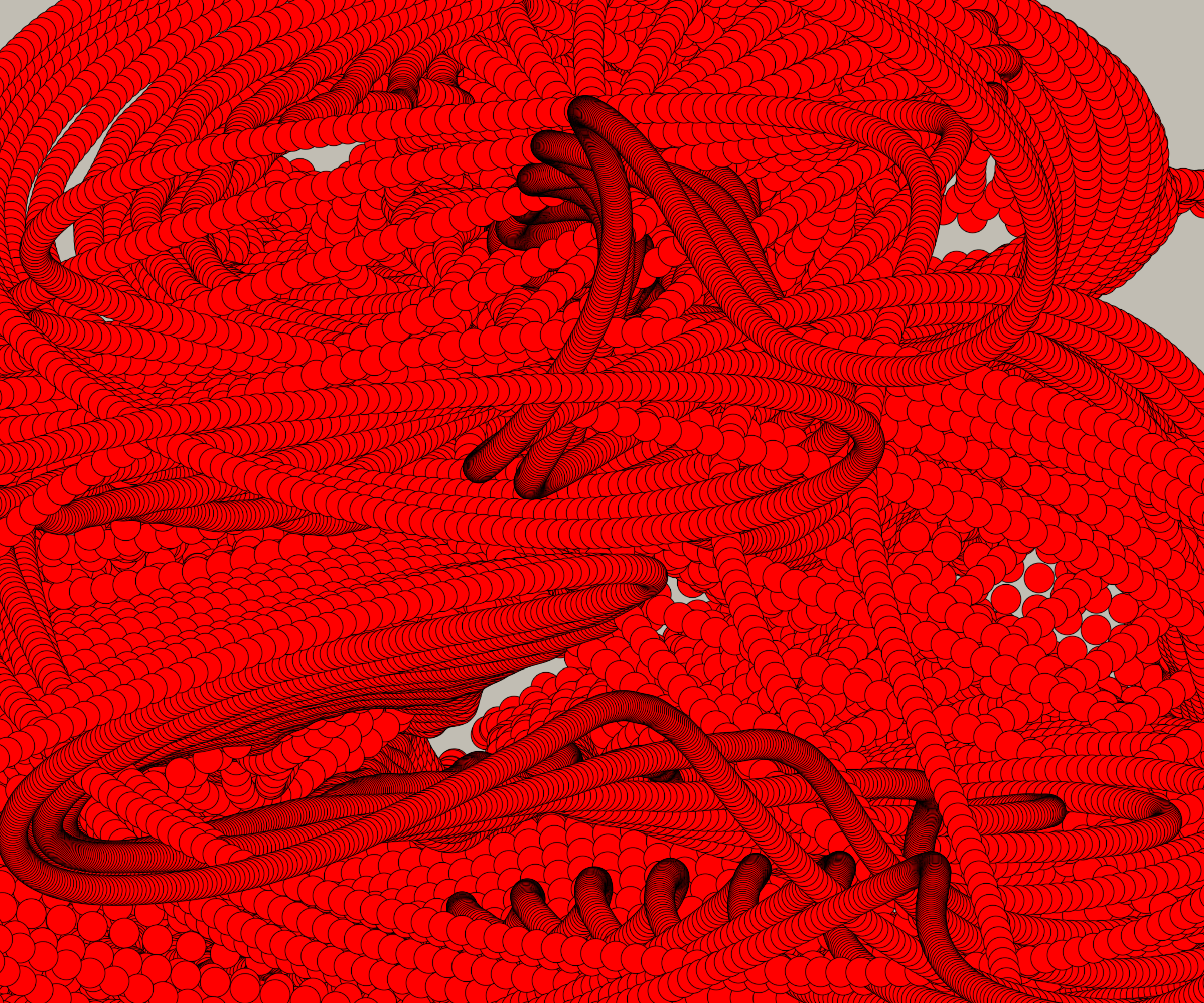
The second part of the algorithm functions like a custom oscilloscope, in which left and right channels are plotted on a Cartesian grid, resulting in a strobing, deconstructed rendition of the source drawing. The interplay between the evaluation rate of the drawing and the animation’s sixty frames per second capture-rate create stuttering after-images and “frozen” states in which the drawing appears to lock into new configurations.
These complex interpolations between sound and image afford us a chance to relate harmonic spectra with visual features: What does a drawing of sharp, repeating strokes sound like? What does a ringing bell look like?
This project takes inspiration from the wavetable synthesis methodologies employed by Industrial Music Electronics’ founder Scott Jaeger in his design of the Piston Honda Mk3 oscillator, as well as the wave morphing techniques made possible by Synthesis Technology’s Paul Schreiber’s WaveEdit tool.
Otrā algoritma daļa funkcionē kā īpaši izstrādāts osciloskops, kurā kreisais un labais kanāls tiek uzzīmēts uz kartēziskas koordinātu plaknes, radot neregulāru, dekonstruētu avota attēla atveidojumu. Saspēle starp attēla apstrādes ātrumu un animācijas kustības fiksēšanas ātrumu – sešdesmit kadri sekundē – rada saraustītus pēcattēlus un “sastingušas” situācijas, kurās attēls šķietami nonāk jaunās konfigurācijās.
Šīs kompleksās interpolācijas starp skaņu un attēlu ļauj sasaistīt harmonijas spektrus ar vizuālām iezīmēm: Kā izklausās ar asiem, atkārtotiem vilcieniem zīmēts attēls? Kā izskatās zvana zvanīšana?
Ieceres tapšanā autors smēlies iedvesmu no viļņu tabulas sintēzes metodoloģijām, kuras Piston Honda Mk3 oscilatora radīšanā izmantojis Industrial Music Electronicsdibinātājs Skots Jēgers, kā arī viļņa metamorfēšanas tehnikas, kuru izmantošanu iespējamu padarījusi Synthesis Technology vadītāja Pola Šreibera programma WaveEdit.
RIO ROYE is a New York-based interdisciplinary artist and designer. His work has been shown at the Hessel Museum of Art, the Provincetown Art Association and Museum, and has been published in N+1 and Vice Magazine. He teaches at the Rhode Island School of Design and works as a freelance motion designer.
RIO ROJE ir starpdisciplinārs mākslinieks un dizainers no Ņujorkas. Viņa darbi ir izrādīti Hesela mākslas muzejā, Provinsetaunas mākslas asociācijā un muzejā, kā arī publicēti žurnālos N+1 un Vice Magazine. Roje pasniedz Rodailendas Dizaina skolā (RISD) un strādā kā ārštata kustību dizaineris.
-
ENLV
Murphyella, Lonely_Chip un Adventurous_Muffin
Murphyella, Lonely_Chip un Adventurous_Muffin
The digital world is convenient for conducting different identity-related experiments. One almost always has the chance to create one’s own virtual image, specifying its age, sex, and role. One can choose not to reveal one’s true identity in the virtual environment, instead replacing it with something else — graphic icons, avatars, different symbols and heroes of pop culture — which characterizes your personality, or rather the idea of you, in a striking manner. Even though many still opt to replace their faces with anime characters, for instance, just as many put themselves on full display and choose to stylize their entire life instead of just their online profiles.
Digitālā pasaule ir ērta vide dažādiem ar identitāti saistītiem eksperimentiem. Gandrīz vienmēr ir iespēja pašam veidot savu virtuālo tēlu, nosakot tā vecumu, dzimumu un lomu. Virtuālajā vidē drīkst arī neatklāt savu patieso identitāti, bet aizvietot to ar kādu citu – grafiskas ikonas, avatari, dažādi simboli un popkultūras varoņi var kļūt par daļu no cilvēka, spilgti raksturojot viņa personību vai drīzāk ideju par konkrēto cilvēku. Lai arī daudzi joprojām izvēlas savu seju aizstāt ar kādu anime tēlu, tikpat daudzi aiz biezas filtru kārtas eksponējas visā pilnībā un tā vietā, lai stilizētu tiešsaistesprofilu, labprāt stilizē visu dzīvi.
Līga Spunde, Avatars, 2021
Līga Spunde, Avatari, 2021
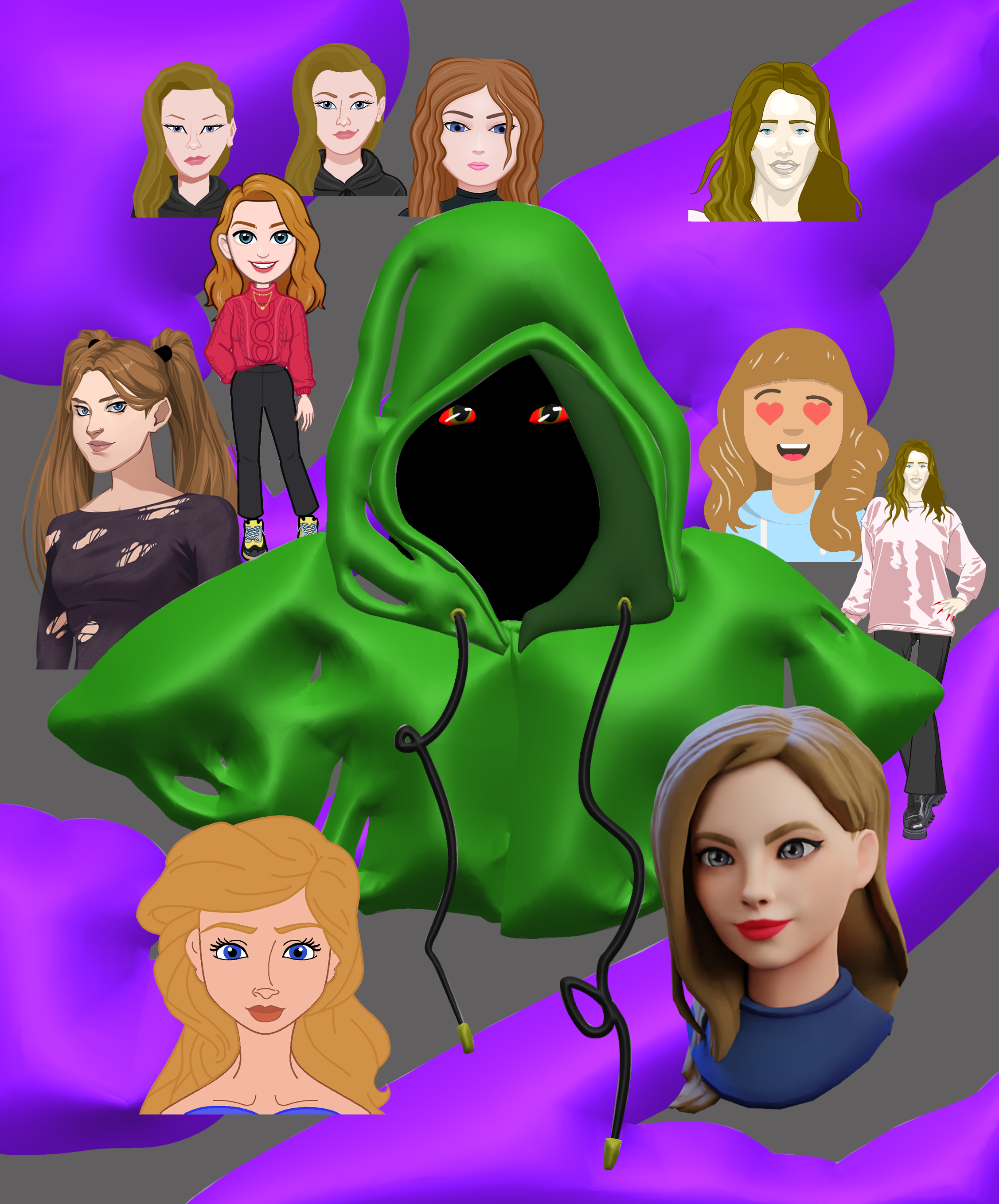
At present, the brightest minds on the globe are involved in creating both private and institutional identities. Huge sums of money are invested in this research, and it is often the attractiveness of an identity that determines the financial fortunes of individuals and businesses. Seeing the extent to which a fortuitous identity can serve as a measure of success, it is no great surprise that identity theft is the fourth most popular type of cybercrime, accompanied of course by blackmail, threats, and different strategies for extorting money in return for a particular identity. For this RTRU project, Spunde seeks out and interprets information related to searching for, finding, and stealing an identity; she combines her findings with her own thoughts and experiences in the form of a visual picture-essay. Spunde's overall aim is to try to understand, through a fact-based and witty approach, the way in which obtaining and losing a virtual identity affects our real lives, and what the terminal destination of all the identities that remain captive is.
Mūsdienās gan privātu, gan institucionālu identitāšu veidošanā tiek iesaistīti pasaules gaišākie prāti un ieguldīti milzu līdzekļi; nereti tieši identitātes pievilcīgums nosaka personas vai uzņēmuma finansiālo veiksmi. Tāpēc, saprotot, cik vērtīga var būt veiksmīga identitāte, nepārsteidz fakts, ka identitātes zagšana ir ceturtais populārākais kibernoziegumu veids – tam līdzi, protams, nāk šantāža, draudi un dažādas citas spekulācijas, mēģinot izspiest naudu par laupītās identitātes atgriešanu. Rīgas tehnokultūras izpētes centra (RTRU) projekta ietvaros Spunde uzmeklē un interpretē dažādus ar identitātes meklēšanu, atrašanu un zagšanu saistītus faktus, kurus kombinācijā ar pārdomām un pašas pieredzi māksliniece vizualizē attēlu esejas veidā. Spundes mērķis ir faktos balstītā, asprātīgā veidā mēģināt saprast, kā virtuālās identitātes iegūšana un zaudēšana ietekmē mūsu reālo dzīvi un kas notiek ar visām tām identitātēm, kas joprojām atrodas gūstā.
LĪGA SPUNDE was born and lives and works in Riga, Latvia. She received her BFA and MFA in Visual Communication from the Art Academy of Latvia. Līga often creates her work as multimedia installations in which personal stories are closely entwined with a consciously constructed fiction. The interpretations and use of recognizable characters serve as an extension of her personal experiences, tapping into general truths. Usually, the content of the work determines the physical form of the conception, so a variety of media and materials are used in the installations.
LĪGA SPUNDE dzimusi un dzīvo un strādā Rīgā, Latvijā. Viņas darbi bieži ir multimediālas instalācijas, kurās personīgi stāsti cieši savīti ar apzināti konstruētu fikciju. Radot plašu, bet reizē smalku tematisku tīklojumu, darbos tiek ietvertas atsauces uz dažādiem laikiem un simboliem. Interpretācijas precizitāte un jauniegūtais konteksts kļūst par personīgās pieredzes paplašinājumu, aizsniedzoties līdz vispārzināmām patiesībām. Darbi tiek veidoti visdažādākajos materiālos un medijos.
-
ENLV
Conformity, cohesion and security: capturing the student body
Konformitāte, kohēzija un drošība: tverot skolēnu kolektīvu
This ongoing research explores the imaging and circulation of the “student body” through vernacular photography and the capturing of student biometrics deployed in schools. Instead of images that get hung up on fridges, folded in wallets, or preserved in libraries, images taken by machines and algorithms hold the potential to end up in dangerous places—the hands of police, the homes of private third party databases, and the screens of CCTVs. If schools are meant to be sites of knowledge production and tutelage, and help socialize the student body, what does it mean to teach, learn, and live in an environment where surveillance is a condition for “safety”?
Rhombus surveillance camera promotional video.
Rhombus novērošanas kameras reklāmas video.
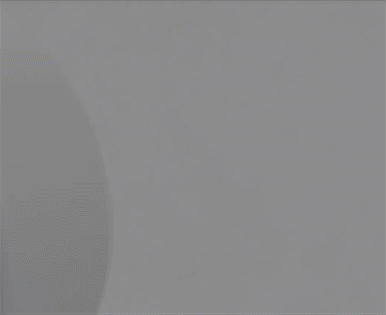
Izmantojot vernakulāro fotogrāfiju un skolās izmantotos skolēnu biometriskos datus, šis pētījums iedziļinās “skolēnu kolektīva” (student body) attēlojumā un apritē. Tā vietā, lai attēli tiktu piestiprināti pie ledusskapjiem, glabāti makos vai saglabāti bibliotēkās, attēli, kas uzņemti ar mašīnām un algoritmiem, var nonākt bīstamās vietās - policijas rokās, privātu trešo pušu datubāzēs un CCTV ekrānos. Ja skolas ir paredzētas būt zināšanu radīšanas un apmācības vietas un palīdz "skolēnu kolektīva" socializācijā, ko nozīmē mācīt, mācīties un dzīvot vidē, kurā uzraudzība (surveillance) ir “drošības” nosacījums?
CANDICE STRONGWATER is an independent curator and investigations coordinator at SITU Research. Working across histories of media, architecture, and educational technology, her research focuses on the classroom as a site of governance, as well as creative practices that counteract the rationalization of U.S. schooling. She organized Classroom Arsenal (2021) at CCS Bard, which reflected on the tangled histories of educational and corporate systems, and co-taught a course in the Photography and Human Rights Program exploring the relationship between imaging technologies and ethics. From 2015-2020, she was the Associate Curator and Head of Public Programs at Red Bull Arts New York. She’s also a part of the collective Video School, which seeks to bridge dialogue between artistic and pedagogical practices, and political organizing.
KENDISA STRONGVOTERA ir neatkarīga kuratore un pētniecības koordinatore SITU Research. Viņa ir specializējusies mediju, arhitektūras un izglītības tehnoloģiju vēsturē, un viņas pētījumi koncentrējas uz skolas klasi kā pārvaldes vietu, kā arī uz radošām praksēm, kas pretojas ASV skolu izglītības racionalizācijai. Organizējusi izstādi Classroom Arsenal (2021), kas norisinājās Bārda koledžas kuratoru studiju centrā un reflektēja par savstarpēji saistītajām izglītības un korporatīvo sistēmu vēsturēm. Bārda koledžā viņa bija viena no starpdepartamentu kursa pasniedzējām Fotogrāfijas un cilvēktiesību programmā, kas pievēršas tehnoloģijām, fotogrāfijai un ētikai. Viņa bijusi apmeklētāju programmas un izstāžu kuratore vairākās kultūrvietās, tai skaitā Red Bull Arts. Viņa ir daļa no Video School kolektīva, kas cenšas veidot dialogu starp māksliniecisko un pedagoģisko praksi un politisko organizēšanu.
-
ENLV
Working the Labor-Leisure Machine: Proposal for a Photography Museum Without Images
Darbs ar darba/izklaides mašīnu: Priekšlikums foto muzejam bez attēliem
Almost seventy years ago, André Malraux introduced the concept of a museum without walls (the “musée imaginaire”) containing photographic reproductions of artworks; he furthermore developed a detailed analysis of the shortcomings and benefits of such a “museum.” I am using Malraux as a starting point for thinking about photography through the lens of a museum without images. Central to my museum is the understanding of photography as a practice, an apparatus, and a form of social interaction. The museum examines photography as a complex mechanism where labor and leisure overlap; photography can simultaneously be a means of production, a source of entertainment, and a commodity for consumption. My method suggests a subversion of the patriarchal and Euro-centric concept of a museum as a collection of valuable masterpieces. Instead, this museum exhibits ideas as works in progress. No doubt, there are also images in this museum, but they play the role of footnotes. Even more importantly, at the time of their making, these images exist(ed) outside, or on the margins of, the mainstream art world.
Pirms gandrīz 70 gadiem Andrē Malro nāca klajā ar ideju par muzeju bez sienām (musée imaginaire), kas būtu veidots no mākslas darbu fotoreprodukcijām, kā arī izstrādāja šāda “muzeja” priekšrocību un trūkumu detalizētu analīzi. Savukārt es piedāvāju veidu, kā domāt par fotogrāfiju, balstoties uz ideju par muzeju bez attēliem. Manis ierosinātā muzeja pamatā ir izpratne par fotogrāfiju kā praksi, aparatūru/tehnoloģiju un sociālās saziņas formu. Muzejs uzlūko fotogrāfiju kā sarežģītu mehānismu, kurā pārklājas darbs un brīvā laika pavadīšana: tāpat tas var būt arī ražošanas līdzeklis, izklaides avots un patēriņa prece. Šajā metodē ievīta noklusēta kritika pret patriarhālo un eirocentrisko koncepciju, kurā muzejs ir vērtīgu šedevru kolekcija. To vietā šajā muzejā izstādītas idejas, turklāt kā iesākti, topoši darbi. Bez šaubām, arī šajā muzejā ir attēli, taču tiem ir vairāk zemsvītras piezīmju loma. Vēl svarīgāk, ka to tapšanas laikā šie attēli eksistē(ja) vai nu ārpus tā, kas mākslas pasaulē ir vispārpieņemts, vai tās perifērijā.
Cover of Nikolai Tarabukin’s book From the Easel to the Machine (От мольберта к машине) (Moscow: Rabotnik prosveshcheniya, 1923). Cover design by Antonina Sofronova
Nikolaja Tarabukina grāmatas “No molberta līdz mašīnai” (От мольберта к машине) vāks (Москва: Работник просвещения, 1923). Vāka dizainere Antoņina Sofronova
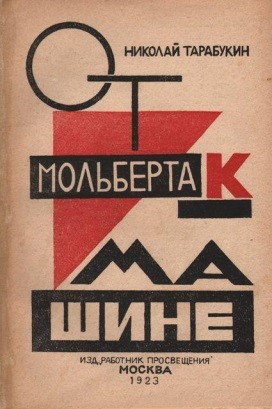
I introduce several rooms of the museum. These rooms offer ways of viewing photography as part of contemporary technological culture, with a focus on concepts like the networked camera, the labor-leisure machine, and obsolescence/prescience. Some of the exhibits in these rooms are based on, or derived from, sources such as Nikolai Tarabukin’s manifesto of Productivism, From the Easel to the Machine (1923), Aby Warburg’s Bilderatlas Mnemosyne (1927–29), André Malraux’s Museum Without Walls (1953), Pierre Bourdieu’s Photography: A Middle-Brow Art (1965), the Kraftwerk album Die Mensch-Maschine (The Man-Machine, 1978), Vilém Flusser’s Into the Universe of Technical Images (1985), Ariella Azoulay’s essay “Unlearning Decisive Moments of Photography” (2018), and Artificial Aesthetics (2021) by Lev Manovich and Emanuele Arielli, among others. The museum exhibits may also refer to works by artists, non-artists, and other creators and producers such as AI, Eugene Atget, Beeple, Caroline Calloway, Zenta Dzividzinska, Ivars Grāvlejs, Madelaine Turner, Penelope Umbrico, and some of the most popular photographers currently on the NFT marketplace, among others.
Šajā priekšlikumā apskatītas vairākas muzeja telpas. Tās piedāvā fotogrāfiju aplūkot kā daļu no laikmetīgās tehnoloģiju kultūras, izmantojot tādus konceptus kā tīklotā fotokamera, darba-brīvā laika mašīna, kā arī novecošanās/paredzēšana (obsolescence/prescience). Daži eksponāti šajās telpās balstās uz vai ir cēlušies no tādiem avotiem kā Nikolaja Tarabukina sarakstītais produktīvisma manifests “No molberta līdz mašīnai” (1923), Abija Varburga Bilderatlas Mnemosyne (1927-29), protams, arī Andrē Malro “Muzejs bez sienām” (1953), Pjēra Burdjē “Vidusmēra māksla: Eseja par fotogrāfijas sociālo lietojumu (1965), Kraftwerk albums Die Mensch-Maschine (“Cilvēkmašīna”, 1978), Vilema Flusera “Tehnisko attēlu Visumā” (1985), Arielas Azulejas eseja “Izšķirošu fotogrāfijas mirkļu aizmiršana” (2018), Ļeva Manoviča un Emanuēla Arieli “Mākslīgā estētika” (2021) utt. Muzeja eksponāti var atsaukties uz citu mākslinieku un nemākslinieku darbiem, kā arī citiem autoriem un producentiem, piemēram, AI, Ežēnu Atžē, Beeple, Ivaru Grāvleju, Kerolainu Kaloveju, Zentu Dzividzinsku, MedlinuTērneri, Penelopi Umbriko, kā arī, cita starpā, dažiem no NFT tirgū veiksmīgākajiem fotogrāfiem.
ALISE TIFENTALE is an art and photography historian based in New York City and Riga, Latvia. She received a PhD in Art History from the City University of New York. Her fields of expertise include sociology of culture, cultural analytics, photography in social media, global history of photography, transnational history of cultural networks such as photo clubs, and the art and photography of Latvia. Tifentale is the author of The Photograph as Art in Latvia, 1960–1969 (Neputns, 2011) and the author or editor of several other books about photography. Her articles are published in journals such as ARTMargins, caa.reviews, Networking Knowledge, PhotoResearcher, Russian Art & Culture Journal, and Scriptus Manet, and she has contributed chapters to volumes including The Routledge Companion to Photography and Visual Culture (2018), Exploring the Selfie: Historical, Theoretical, and Analytical Approaches to Digital Self-Photography (Palgrave Macmillan, 2018), The History of European Photography, 1970–2000 (Bratislava Central European House of Photography, 2016), and Postdigital Aesthetics: Art, Computation, and Design (Palgrave Macmillan, 2015). She co-curated (together with Anne Barlow and Courtenay Finn) North by Northeast, the Pavilion of Latvia at the 55th International Art Exhibition—La Biennale di Venezia (2013). In 2005, Tifentale established a photography history and theory magazine Foto Kvartāls and served as its editor-in-chief until 2010.
ALISE TĪFENTĀLE (PhD) ir mākslas un fotogrāfijas vēsturniece. Dzīvo un strādā Rīgā un Ņujorkā. Ieguvusi zinātņu doktora grādu mākslas vēsturē Ņujorkas Pilsētas universitātē. Zinātnisko interešu lokā ir kultūras socioloģija, kultūras analītika, fotogrāfija sociālajos medijos, globāla fotogrāfijas vēsture, transnacionālu kultūras tīklojumu vēsture, kā arī Latvijas mākslas un fotogrāfijas vēsture. Tīfentāle ir autore grāmatai “Fotogrāfija kā māksla Latvijā, 1960–1969” (Rīga: Neputns, 2011) un vairāku citu fotogrāfijai veltītu izdevumu autore vai sastādītāja. Viņas zinātniskie raksti publicēti tādos starptautiskos žurnālos kā ARTMargins, caa.reviews, Networking Knowledge, PhotoResearcher un Russian Art & Culture Journal, kā arī tādos Latvijas izdevumos kā “Mākslas Vēsture un Teorija” un Scriptus Manet. Tīfentāles sarakstītās nodaļas iekļautas tādos zinātniskos izdevumos kā The Routledge Companion to Photography and Visual Culture (2018), Exploring the Selfie: Historical, Theoretical, and Analytical Approaches to Digital Self-Photography (Palgrave Macmillan, 2018), The History of European Photography, 1970–2000(Bratislava Central European House of Photography, 2016), un Postdigital Aesthetics: Art, Computation, and Design (Palgrave Macmillan, 2015). Viņa bija kuratore (kopā ar Enu Bārlovu un Kortniju Finu) Latvijas paviljonam 55. starptautiskajā Venēcijas mākslas biennālē (2013). 2005. gadā Tīfentāle izveidoja fotogrāfijas vēstures un teorijas žurnālu “Foto Kvartāls” un bija tā galvenā redaktore līdz 2010. gadam.
-
ENLV
Four Characters in Search of a Random Exit – Alice, Bob, Carol and David
Četri tēli, kuri meklē nejaušu izeju—Alise, Bobs, Kerola un Deivids
Viktor Timofeev presents supplementary materials from a recent work entitled Four Characters in Search of a Random Exit, originally exhibited at kim? Contemporary Art Centre, Riga in 2017, and recently refactored for Metabolic Rift at Kraftwerk Berlin. The piece is a software-driven choreography performed by four game characters. The materials assembled specifically for RTRU include choreographic charts, screen recordings, and Timofeev's own writings.
Viktors Timofejevs prezentē papildmateriālus no sava darba “Četri tēli meklē nejaušu izeju”, kas sākotnēji izstādīts 2017. gadā Rīgā, Kim? Laikmetīgās mākslas centrā un nesen pārveidots grupas izstādei Kraftwerk Berlin. Darbs ir programmatūras darbināta horeogrāfija, kuru izpilda četri spēļu varoņu kloni. Starp īpaši RTRU izveidotajiem papildmateriāliem rodami horeogrāfijas pieraksti, ekrāna ieraksti un paša Timofejeva teksti.
Still from Four Characters in Search of a Random Exit–Alice, Bob, Carol and David, 2017 - 2021, courtesy of artist
Kadrs no darba “Četri tēli, kuri meklē nejaušu izeju – Alise, Bobs, Kerola un Deivids”, 2017– 2021, ar autora atļauju
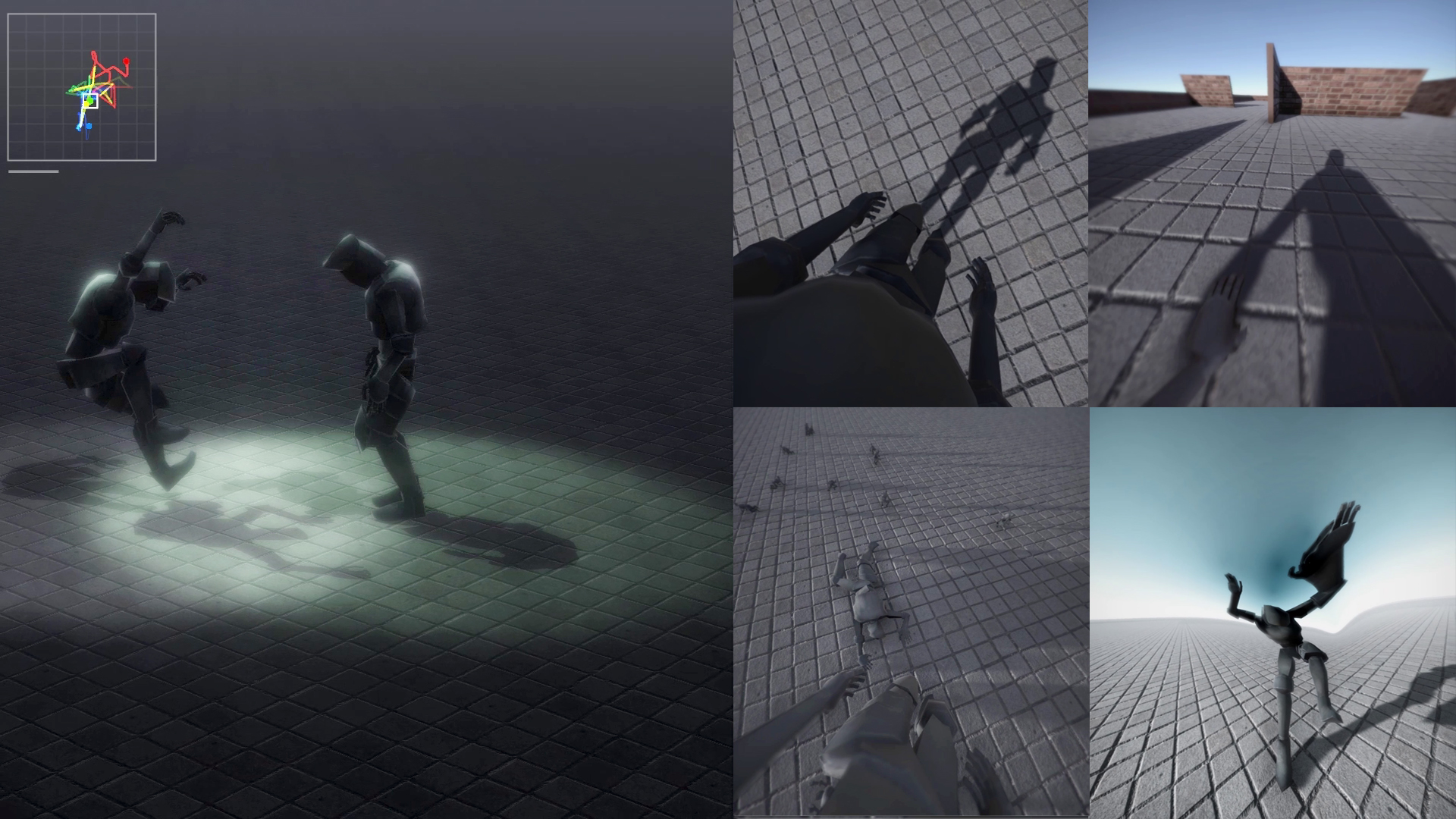
Viktor Timofeev was born in Riga, Latvia and is currently living and working in New York. Recent solo exhibitions include DOG at Interstate Projects in New York (2021), God Objects at Karlin Studios in Prague (2020), and God Room at Alyssa Davis Gallery in New York (2019). Recent group exhibitions include Post Digital Intimacy at National Gallery Prague in Prague, 14th Baltic Triennial at Contemporary Art Centre in Vilnius, and Spatial Affairs at Ludwig Museum in Budapest (all 2021).
VIKTORS TIMOFEJEVS dzimis Rīgā, Latvijā, un dzīvo un strādā Ņujorkā. Starp pēdējām personālizstādēm minama DOG (Interstate Projects galerijā Ņujorkā, 2021), God Objects (Karlin Studios Prāgā, 2020), kā arī God Room (Alyssa Davis galerijā, Ņujorkā, 2019). Dalība grupu izstādēs: Post Digital Intimacy Nacionālajā galerijā, Prāgā, 14. Baltijas triennālē Viļņas Laikmetīgās mākslas centrā, un Spatial Affairs Ludvigu laikmetīgās mākslas muzejā, Budapeštā (visas 2021).
-
ENLV
Nothing Left to Do but Function
Nothing Left to Do but Function
Taking the form of several CG images and animations expressed as “facts and figures,” Nothing Left to do but Function takes up the thought of art historian Aby Warburg—specifically his notions of nachleben (defined as “afterlife” and “survival”) and pathosformel (“defined as “emotive formulas” or passionate gestural language) as it relates to the process of CG image-making and virtual worldbuilding.
The image files at play in a virtual scene can be thought of as symptoms, in that their behaviors and actions are manifestations of latent or repressed qualities, whether those qualities be RGB (color and transparency information), bit depth (resolution), or embedded contents (a shadow or a gesture). Images work as maps, defining the physical qualities of the scene: the human eye cannot see the quantities embedded in the image file, but the computer sees the otherwise intangible qualities and puts them to work in the rendered virtual scene.
Izstādē ar nosaukumu “Atlicis vien funkcionēt” (Nothing Left to Do but Function) figurē datora radīti attēli un animācijas, kas izteiktas “faktu un skaitļu” formā, pievēršoties mākslas zinātnieka Abi Varburga idejām, konkrētāk, viņa konceptiem nachleben (proti, “aizkapa dzīve” un “izdzīvošana”) un Pathosformel(“emociju formulas” jeb aizrautīga žestu valoda) un to saistībaiar datorģenerētu attēlu veidošanu un virtuālo pasaules veidošanu (worldbuilding).
Virtuālā ainā aktīvos attēlu failus var uzlūkot kā simptomus tādā ziņā, ka to uzvedība un rīcība parāda tādas latentas vai apspiestas īpašības kā RGB (krāsas un caurspīdīguma informācija), bitu dziļums (izšķirtspēja) un iestrādātais saturs (ēna vai žests). Attēli pilda kartes funkciju, definējot ainas fiziskās kvalitātes: cilvēka acs nespēj saredzēt attēla failā iestrādātās kvantitātes, taču dators spēj saskatīt citādi netveramās kvalitātes un tās izmantot virtuālās ainas renderēšanā.
Image of fingerprints breaking up the roughness and anisotropy of virtual glass, 2021 (courtesy the artist)
Attēls, kuros pirkstu nospiedumi aizsedz virtuālā stikla raupjumu un anizotropiju, 2021 (ar mākslinieces atļauju)

I’m imagining this work as a flirtation—a push and pull between exposure and concealment: the textual form of “facts and figures” comes from the supporting visualizations in the essay, which demonstrates the impulse to index the processes of CG image-making and virtual worldbuilding as a way of “showing how it’s done,” and using Warburg as the entry point to understanding these processes.The images and animations engage with some of these processes—for example, changing lighting conditions on a virtual object, or investigating how a cache of images interrupt the transparency of virtual glass. However, by concealing the sub-perceptual computation that weaves together an arsenal of input files into seamless FX, the work maintains its enchantment. What remains is the anxiety around virtual worldbuilding as we recognize that the technical backdrop of these images are ghosts that haunt them, rather than their reason for existing.
Šo darbu es iztēlojos kā flirtu – atklāšanās un slēpšanās miju: “faktu un skaitļu” tekstuālā forma ņemta no esejai pievienotajām vizualizācijām, kas parāda centienus uzlūkot datorģenerētu attēlu un virtuālās pasaules veidošanas procesus kā veidu, kādā “parādīt, kā tas notiek”, un izmantot Varburga idejas kā sākumpunktu šo procesu izpratnei.
Attēli un animācijas pievēršas dažiem no šiem procesiem, piemēram, mainot virtuāla objekta apgaismojuma apstākļus un pētot, kā kešs ar pirkstu nospiedumu attēliem aizsedz virtuāla stikla caurspīdīgumu. Tomēr, noslēpjot subperceptuālo aprēķinu, kas apvieno ievades failu arsenālu nevainojamā FX, darbs saglabā savu burvību. Tas, kas paliek pāri, ir satraukums par virtuālo pasauļu veidošanu, mums saprotot, ka šo attēlu tehniskais fons ir tos apsēdušie spoki, nevis to eksistences iemesls.
JESSICA WILSON (1991, NYC) is an artist living and working in NYC.
DŽESIKA VILSONE (Jessica Wilson, 1991, Ņujorka) ir māksliniece, dzīvo un strādā Ņujorkā.
